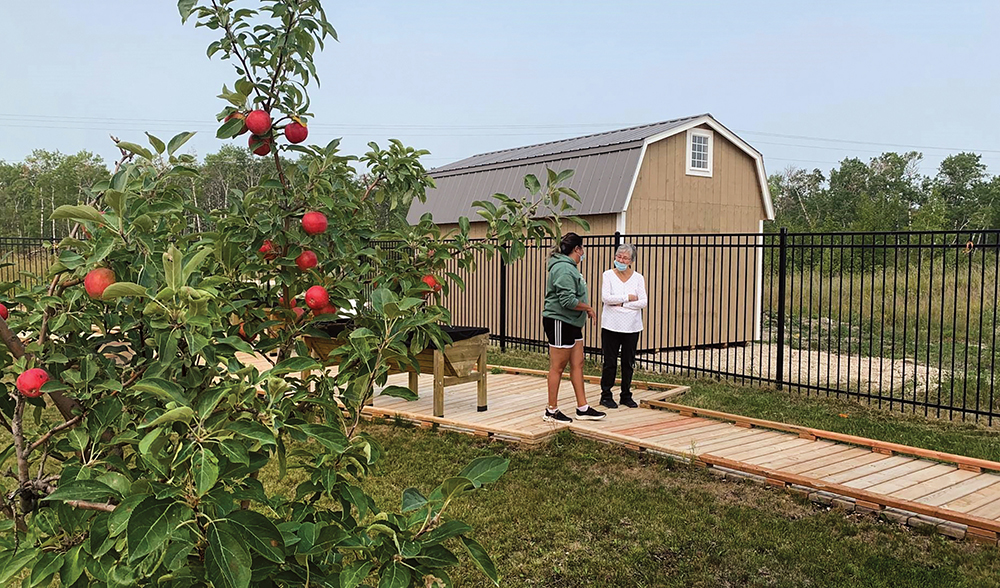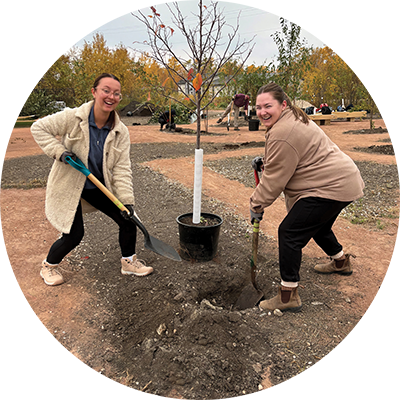
An accessible outdoor space designed for children who use wheelchairs in Lake Manitoba First Nation marked an early success for the Wellness partnership between the College of Rehabilitation Sciences and First Nations communities.
The college recruited Dietmar Straub and Anna Thurmayr, landscape architecture professors at UM, to design the project.
Completed in 2021, Zaagaate Garden incorporates a playground and includes a circular boardwalk as its main feature. It is culturally appropriate, safe, interactive, sustainable and available year-round for children who have accessibility challenges. The name Zaagaate means “the sun is shining.”
“The garden’s design is modelled after the four directions of the medicine wheel,” said Debra Beach Ducharme [B.Ed/85, M.Ed/09], director of Indigenous health integration at Ongomiizwin – Education in the Rady Faculty of Health Sciences.
In 2022, a new walking trail that connects to the boardwalk was initiated. Straub and Thurmayr designed the Shared Path, which winds through a landscape that includes rock features and an apple and plum orchard.
“The trail’s name refers to the shared work of creating the path, and who it will benefit. It’s a space for shared work, teaching, learning and healing,” said Cara Brown [BMROT/96, M.Sc./08, PhD/19], associate professor of occupational therapy and the college’s project lead for the trail.
Connecting the trail to the boardwalk has created a welcoming all-ages space for physical exercise and spiritual and mental growth, said Lawrence West, health director at Lake Manitoba Health Centre and project lead for the community.
“We wanted someplace safe for our older community members to walk, because walking is one of the best things you can do for your overall health. And the trail is not just an oval track. There are lots of twists and turns through this natural space.”

Lake Manitoba First Nation first identified physical health for older adults as one of its top priorities at a retreat hosted by the College of Rehabilitation Sciences in 2020. The project secured funding from the Canadian Frailty Network and the RBC Experiential Learning Travel initiative.
Occupational therapy students interviewed Elders and community health-care providers, asking how they would like to see physical health supported. The Elders imparted the importance of intergenerational gathering spaces for health and well-being.
“We learned a lot of therapeutic skills, building relationships,” said Corrine Clyne [M.O.T./21], an Indigenous PhD student in applied health sciences who spent six weeks working on the project when she was a student in the occupational therapy program.
In 2024, 13 UM students from architecture, occupational therapy and medicine planted more than 400 trees and shrubs to enhance the trail.
Brown said the Shared Path will enter its final design phase in the spring of 2026 with the planting of meadows with sage, sweetgrass and other native grasses and perennials.
“This planting will add to other initiatives the community has been doing to bring more natural medicines and foods into their everyday lives.”
BY ALAN MACKENZIE
